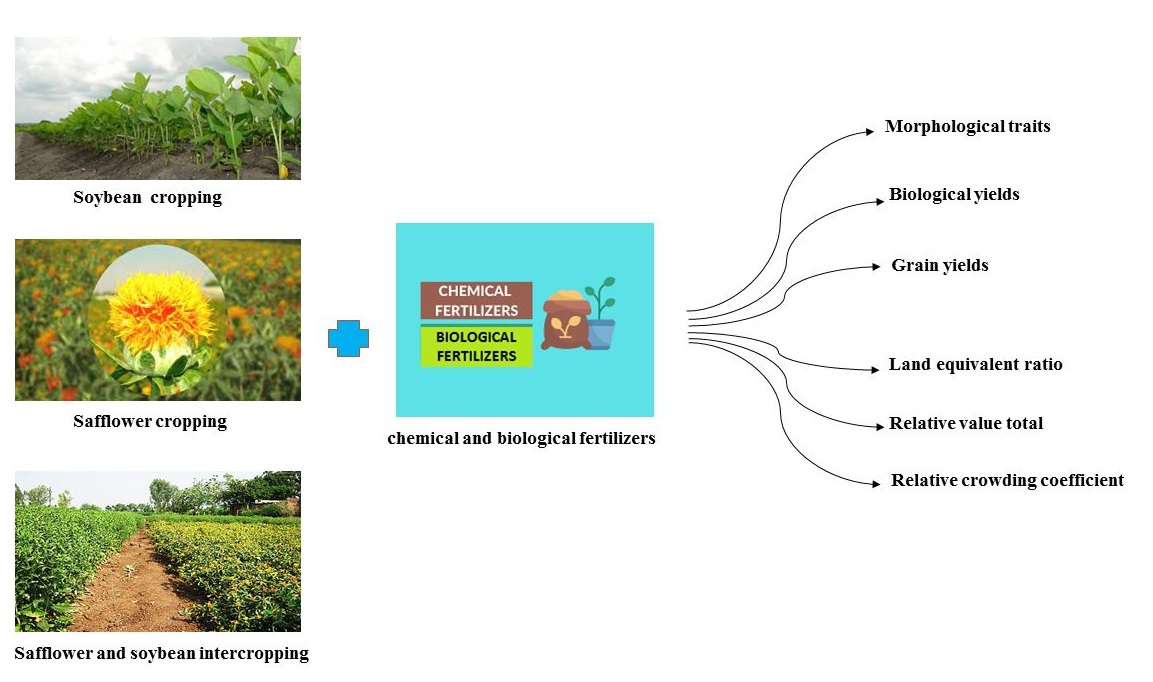Effect of chemical and biological fertilizers on the morphology and yield of safflower and soybean under monoculture and intercropping

Published 2022-03-31
Keywords
- Biofertilizer,
- grain yield,
- number of grains per plant,
- plant height,
- urea fertilizer
How to Cite
Copyright (c) 2022 Yaghoub Raei, Roghaye Ghahremani, Saeid Ghassemi, Jalil Shafagh-Kolvanagh

This work is licensed under a Creative Commons Attribution 4.0 International License.
Abstract
Intercropping and biofertilizers application are the most important agricultural methods for moving towards minimizing the risks of agricultural production and increasing production efficiency. Consequently, this experiment was conducted at one year and in 2019. A factorial set of treatments was arranged within randomized complete block design (RCBD) with three replications to investigate the effect of different planting ratios with safflower and soybean (sole cropping, 30:100 soybean to safflower ratio, 60:100 soybean to safflower ratio and 90:100 soybean to safflower ratio) and nutrient levels (100% urea fertilizer, 100% biofertilizer and the combined application of urea and biofertilizer) on growth and yield of these crops. The results of this study indicated that intercropping patterns had the highest plant height, number of grains per plant, biological and grain yields. In addition, the means of the number of heads per plant and the number of grains per head in safflower and the weight of 1000 grains in soybean were increased as intercrops were grown. Maximum of grain number per plant in safflower, leaf number per plan in soybean and biological and grain yields in both crops were attained in urea + biofertilizer. In all of intercropping patterns the values of LER (land equivalent ratio), RVT (relative value total) and RCC (relative crowding coefficient) was more than one, indicating an advantage from intercropping over sole crops.




